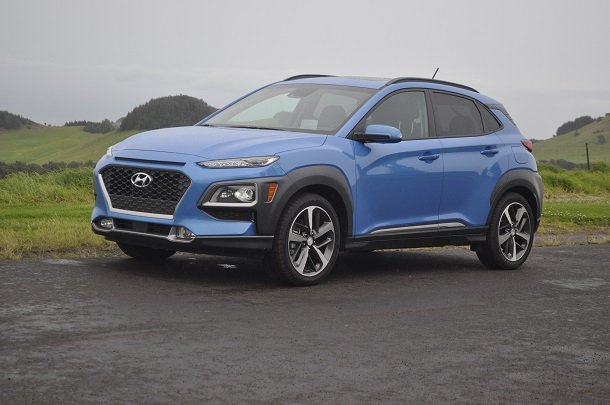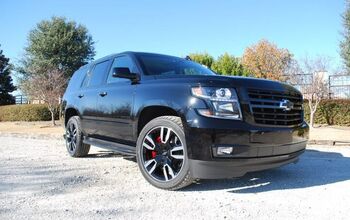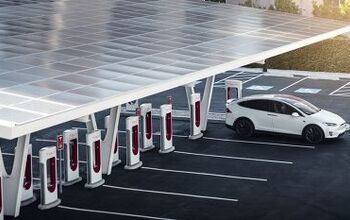2018 Hyundai Kona First Drive - Content Comes at a Price

It’s probably a little too on the nose for any automaker to launch a car in the city, state, or region it’s named after, but that didn’t stop Hyundai from bringing media to Hawaii to drive the newest entry into the subcompact crossover class.
Hyundai did so not just because of the “synergy” (ugh) between place and name, but because the company wanted to show us scribes how sporty and fun and well-suited to outdoorsy folk the Kona is. Never mind that most compact SUV buyers aren’t hauling long boards – they’re hauling little humans.
Every automaker does this — projecting their crossovers as the key to adventure. And I have no doubt that equipped with the correct accessories, the Kona can haul your bikes to the trailhead just fine. But most of these are going to be found in traffic on city streets, just like most of the crossovers buyers will cross-shop against the Kona.
The bigger question, then, is where does the Kona fit in a segment Hyundai calls the “Wild West?”
Full disclosure: Hyundai flew me out to Kona, on the big island of Hawaii, put me up in a nice hotel with waterfront views that offered activities such as snorkeling (I did that for 10 minutes before departing), fed me several excellent meals (including one that took place as part of a luau), gave me a pair of sandals, and pre-paid for a pass to Hawaii Volcanoes National Park.
A few years ago, the subcompact crossover hardly existed. Now the class is populated by the likes of the Honda HR-V, Toyota C-HR, Jeep Renegade, the new Nissan Kicks, and the Subaru Crosstrek wagon.
Hyundai used the term “Wild West” to imply there’s more variation between models in this segment than usual, and that’s accurate, in my view. You have the boxy Renegade, the tall-wagon Crosstrek, the oddly styled Toyota C-HR, and the Mazda CX-3, which is essentially a lifted Mazda 2 (a model Mazda doesn’t sell here, except in Toyota form). Only the Chevy Trax, Honda HR-V, Ford EcoSport, and upcoming Kicks look, at first glance, to have “traditional” crossover shaping.
Enter the Kona. Although it has some interesting design quirks – the squinty headlights and the open slat above the grill being the most obvious – it doesn’t have the chopped roof of the C-HR or the “box it came in” shape of the Renegade. It’s proportioned the way one expects a subcompact crossover to be.
I roll my eyes at words like “stance” in most cases, but Hyundai’s use of it in the press materials makes sense here – the Kona looks sporty, or at least as sporty as any small ‘ute can look. It’s an eye-catching design, putting it alongside the Renegade and Kicks for top billing in the obviously subjective “best looking” category for crossovers of this size.
The interior is a bit of a letdown, however. Hyundai opted for simple over sexy, and while that’s appreciated on some level – I have an affinity for plain and functional yet handsome design – it also feels like the company is playing it safe. Hyundai has picked up on the ugly trend of high-mounted center-stack screens, although this one appears better integrated than most. Perhaps the chintziest thing is the climate display – it looks like an afterthought.
At least the buttons are easy to read and reach, and Hyundai offers features such as a head-up display and Apple CarPlay/Android Auto. Materials feel class appropriate, with some feeling a bit upscale for the price point. There were more soft-touch surfaces than I expected.
Hawaii’s roads aren’t a driver’s dream – although there are some twisty bits, most of the big island’s highways are clogged with semis, rental cars, and Toyota Tacomas lifted to the hilt (my drive partner and I proposed a drinking game based on Tacomas spotted, before realizing that would result in grim death). The pavement is also surprisingly cracked in places and some small hills led to a series of whoop-de-doos. Oh, and wildlife has a habit of wandering out in front of you.
The Kona travels these roads with a stiffly sprung suspension. It rides as if someone at R&D thought “sporty” just simply means “stiff.” There’s two drive modes – normal and sport – and though pushing the sport button firms up the steering, even in normal mode the Kona doesn’t feel fully relaxed. It’s relatively high-strung, with the aforementioned cracked pavement not going unnoticed. The suspension also seemed to unload on the whoop-de-doos, giving way to a floating sensation. It should be noted that while front-drive and all-wheel-drive models both have a MacPherson strut front suspension, the AWD models swap a torsion beam rear setup for a multi-link layout.
We were only given one model and trim to sample – the all-wheel drive, top-trim Ultimate. There are two engines on offer. The base mill is a 2.0-liter four-cylinder (147 horsepower, 132 lb-ft of torque) that mates to a six-speed automatic trans, while the top engine is a 1.6-liter turbocharged four (175 horsepower, 195 lb-ft of torque) that pairs with a seven-speed dual-clutch automatic. The base engine is available on SE and SEL models, while the turbo comes with Limited and Ultimate trims.
The 1.6 feels like just about every other small turbo four in the industry – there’s a slight wait for the power to come on, then you get just enough for passing but not so much that you’ll be wowed. I had to plan my passes a bit, but they weren’t too dramatic, either. The brakes felt a tad grabby.
It’s a sporty experience that sacrifices some ride comfort – I’d be curious how the Kona feels on a long freeway stint. The good news is that it’s engaging. Some of the vehicles in this segment have a drive experience that makes you yearn for self-driving cars – but I suspect the stiffness will turn some buyers off. I’m surprised there’s no comfort mode available on the drive-mode selector.
By coincidence, I’d driven the C-HR just prior to the Kona, and, while I found Toyota’s little oddball ‘ute to be a bit more fun than expected, I’d probably lean towards the Kona over the C-HR just for the overall package.
That package includes a fair amount of features, both standard and available. As mentioned, Apple CarPlay and Android Auto are standard. So is a rear-view monitor, LED daytime running lights, automatic headlights, Bluetooth, cruise control, tire-pressure monitoring, and 60/40 fold-flat rear seats.
Key available features include navigation, Hyundai’s BlueLink connected-car system, 18-inch wheels, power driver’s seat, leather seats, LED headlights and taillights, automatic climate control, proximity key with push-button start, contrasting roof colors, rain-sensing wipers, sunroof, head-up display, wireless cell-phone charging, fog lights, uplevel audio, lane-keeping assist, forward-collision avoidance with pedestrian detection, heated front seats, roof rails, blind-spot collision warning, and driver-attention warning.
As noted, Hyundai tossed me the keys to a Kona in Unlimited trim with AWD, so not only can I not tell you how the base engine and six-speed work together, or how the vehicle behaves with FWD (with either engine), but I can’t get a hands-on sense of what the value proposition of the lower trims might be. I can only look at the press materials and take an educated guess.
Certainly, a Limited basing at $24,700 seems tempting, even if it means sacrificing nav, the larger 8-inch infotainment LCD touchscreen that comes with nav, wireless charging, the head-up display, forward-collision warning, lane-keep assist, rain-sensing wipers, high-beam assist, Blue Link, and the premium Infinity audio system.
Shorter in length than all expect the EcoSport, the Kona has mid-pack interior dimensions. I had no complaints concerning front headroom and legroom, but rear-seat space was tight, especially with the front seats positioned all the way back. Cargo-wise, the Kona is fourth in class with 19.2 cubic feet of cargo volume with the rear seats up.
Hyundai claims a price (and feature) advantage across the board compared to the Trax, HR-V, C-HR, Renegade, and Crosstrek for the SE over similarly equipped versions of those cars, and it does the same, with exceptions, for the SEL and Limited. But the company’s media materials didn’t do the comparison for the Limited – which bases at $27,400, with my test vehicle chiming it at $29,775 (the test unit based at $28,700 and added $125 for carpeted floor mats and $950 in destination – the $1,300 difference in base price appears to be for AWD).
Firing up the old browser and weighing it down with tabs from each OEM’s consumer site, some pointing and clicking shows the loaded Kona checks in cheaper than similarly equipped versions of the Crosstrek and Renegade (I didn’t compare the Trailhawk or Deserthawk because of their off-road mission) but more expensive than the EcoSport, Trax, HR-V, or C-HR – and it’s worth noting that the Kona may line up better against the top trims of these vehicles in Limited guise (it’s also worth noting a loaded Toyota RAV4 is only slightly more).
Even in this age of rising prices, it’s still hard to wrap my head around a $30k subcompact crossover or wagon, yet that’s where the industry stands. A near-$30k Kona seems ludicrous, but it’s still slightly cheaper than the Renegade and Crosstrek when equipped similarly, and it’s much better than both the Trax and the C-HR, so it’s worth the premium over those.
The HR-V, which I liked the last time I drove one, is just a few hundred bucks cheaper than the Kona Limited in EX-L with Navi/AWD trim, but that undercuts the Kona Ultimate by a few thousand. However, the Kona has a few things you can’t get on the HR-V, such as smartphone integration.
Perhaps the Ultimate is overkill – a $26,650 or so price for a Limited does seem more reasonable, even with the content cut – but the Kona does offer a lot of available features. It just doesn’t do so at a value price, necessarily.
Hyundai’s built a small crossover that’s well done overall, and I found myself liking it more than not over two days of driving. I still dig the Renegade and the HR-V, but the Kona is right in the mix. If I were shopping in this class, those three would pretty much be the list (I haven’t driven the Kicks or EcoSport yet, and the Crosstrek is nice but I put it in a different category, since it’s a wagon).
The biggest drawbacks here are an unimaginative interior, a ride that errs on the stiff side, and the cash outlay for a loaded Ultimate with AWD (a FWD Limited seems much more reasonable). If you can live with those first two downsides, the Kona is one of the stronger options in this class.
[Images: 2018 © Tim Healey/TTAC]

Tim Healey grew up around the auto-parts business and has always had a love for cars — his parents joke his first word was “‘Vette”. Despite this, he wanted to pursue a career in sports writing but he ended up falling semi-accidentally into the automotive-journalism industry, first at Consumer Guide Automotive and later at Web2Carz.com. He also worked as an industry analyst at Mintel Group and freelanced for About.com, CarFax, Vehix.com, High Gear Media, Torque News, FutureCar.com, Cars.com, among others, and of course Vertical Scope sites such as AutoGuide.com, Off-Road.com, and HybridCars.com. He’s an urbanite and as such, doesn’t need a daily driver, but if he had one, it would be compact, sporty, and have a manual transmission.
More by Tim Healey
Latest Car Reviews
Read moreLatest Product Reviews
Read moreRecent Comments
- Turbo Is Black Magic My wife had one of these back in 06, did a ton of work to it… supercharger, full exhaust, full suspension.. it was a blast to drive even though it was still hilariously slow. Great for drive in nights, open the hatch fold the seats flat and just relax.Also this thing is a great example of how far we have come in crash safety even since just 2005… go look at these old crash tests now and I cringe at what a modern electric tank would do to this thing.
- MaintenanceCosts Whenever the topic of the xB comes up…Me: "The style is fun. The combination of the box shape and the aggressive detailing is very JDM."Wife: "Those are ghetto."Me: "They're smaller than a Corolla outside and have the space of a RAV4 inside."Wife: "Those are ghetto."Me: "They're kind of fun to drive with a stick."Wife: "Those are ghetto."It's one of a few cars (including its fellow box, the Ford Flex) on which we will just never see eye to eye.
- Oberkanone The alternative is a more expensive SUV. Yes, it will be missed.
- Ajla I did like this one.
- Zerofoo No, I won't miss this Chevrolet Malibu. It's a completely forgettable car. Who in their right mind would choose this over a V8 powered charger at the rental counter? Even the V6 charger is a far better drive.







































Comments
Join the conversation
I saw one of these at the auto show the other day and really liked it at first. Of course that was because I had walked up from behind it and hadn’t seen the front end yet. As I was praising it my son walked around the front and said I’d probably want to reconsider my opinion. Yikes! This makes the front of a Nissan Juke look cohesive. This thing looks like the grill designer never talked the headlight designer and neither of them looked at the rest of the vehicle.
Common Hyundai seriously. You have a better more powerful DI 2.0 in your arsenal yet you put this weak sauce 147 HP port injected version. And did they really have to copy others with the cheap tacked on iPad look for the touchscreen? I also don't care if others are pricing these tiny cute utes up to 30K. It's still too much and I would never in a million years pay that for one of these things.